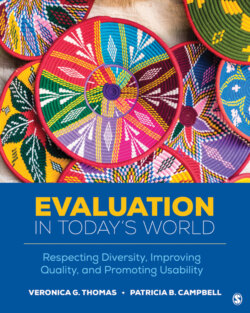Читать книгу Evaluation in Today’s World - Veronica G. Thomas - Страница 77
На сайте Литреса книга снята с продажи.
Sources of Ethical Dilemmas
ОглавлениеThere are multiple sources of ethical dilemmas for the evaluator. Mathison (2007) identified three sources of ethical dilemmas in evaluation that are not mutually exclusive. One source includes ethical issues that arise from doing the evaluation. These, she argues, are manifested in various ways such as delivering evaluation findings or reports that (a) are laundered to omit negative findings, (b) exaggerate successes and positive findings, (c) are suppressed altogether, (d) are released belatedly so they are no longer relevant, and (e) are prematurely released or leaked to the public. Reducing complex evaluation findings into sound bites can become an ethical issue when they are misleading. For example, based on some positive findings from the evaluation, a program administrator can post flyers or hold press conferences claiming “our treatment works.” This fails to communicate the complexity of the findings that “treatment worked” only for certain groups of participants and not others.
A second source of evaluation dilemmas identified by Mathison (2007) includes ethical issues that are created by the evaluator. Relevant examples include the evaluator’s (a) personal or financial interest in the evaluand (i.e., conflicts of interest), (b) lack of knowledge or skill in the evaluation technique or method being used, (c) lack of cultural competence and sensitivity (such as lack of knowledge and respect for local culture and values), (d) ideological positions or values that can bias the evaluation outcome, and/or (e) propensity to deliver positive evaluations to increase job security. When evaluators make promises that they cannot deliver such as agreeing to totally unrealistic timelines just to secure a contract, another ethical dilemma arises as a result of their behavior. Ultimately, ethical evaluators have a responsibility to be honest, independent, impartial, credible, and accountable for their work and to the public. They also have the ethical responsibility to respect the rights, dignity, and diversity of participants; to do them no harm; and to maintain their dignity and confidentiality.
The third source of ethical dilemmas identified by Mathison (2007) includes ethical issues that do not arise from the conduct of the evaluator or from doing the evaluation, but instead exist within the context of the evaluand and are discovered when planning or conducting the evaluation. When such an issue is uncovered by the evaluator, it unexpectedly places the evaluator in an ethical dilemma. Examples include uncovering (prior to any data collection activity) that program administrators are engaging in illegal activities (e.g., theft) and malfeasance (e.g., misappropriation of program funds). Uncovering program activities that are knowingly harmful to clients or to public health or safety (e.g., poor food-handling practices) can also pose an ethical dilemma for the evaluator. Here, evaluators must determine whether there is an ethical imperative to “blow the whistle” on the activity in order to protect the public (Mathison, 2007).
It is noteworthy to mention that evaluators do not always agree whether a particular situation represents an ethical dilemma. Many times, the lines between ethical and unethical ways of responding can be blurred or ambiguous. In such situations, the evaluator must make a judgment call, which, of course, is done through his or her own cultural lens. In ambiguous situations, the course of action taken will be a function of how the evaluator interprets the situation. Morris and Jacobs (2000) had a national sample of evaluators respond to a case vignette in which the evaluator assembles a widely representative advisory group for a project but does not actively involve group members in the evaluation process. Their findings indicate that 39 percent of the sample regarded the evaluator’s failure to involve stakeholders actively in the advisory group as “definitely” or “probably” ethically problematic; 49 percent of the sample believed that the evaluator’s behavior was “definitely not” or “probably not” ethically problematic; and 12 percent were “unsure.” Thus, one evaluator’s ethical dilemma may be viewed by another evaluator as a political problem, a philosophical disagreement, or a methodological concern (Morris, 2008).
